Egypt celebrates the 71st anniversary of the Free Officers Movement on Sunday. I have nothing more to say than what I have said in the past years: that movement proved to be a big failure for Egypt, despite its achievements.
Its failure has been deeply felt in Egypt to this day and will continue to impact future generations unless a miracle happens.
 |
| Late President Gamal Abdel Nasser in a speech on MayDay at Abu Zaabal steelwork factory in May 1970. It was his last MayDay speech |
In 2023, we know firsthand that military coups do not bring democracy, social justice, or economic justice. We had a not-so-prefect level of freedom of speech and political freedom on 22 July 1952, that no other country in the Arab world currently enjoys.
In 1951 if I am not mistaken the Egyptian House of Representatives rejected a request from Abdeen Palace to get extra money to renew the "Queen’s bedroom” so a new bedroom could be bought for Queen Nariman, King Farouk's second wife.
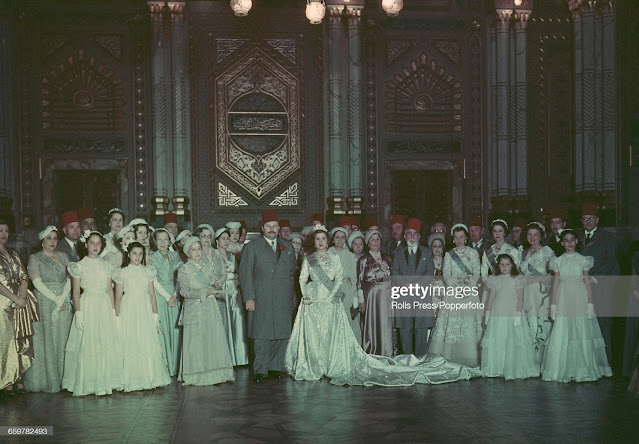 |
| The coloured photo Royal Family of King Farouk I and Queen Nariman on 6 May 1951 at the famous Throne hall of Abdeen Palace in Cairo |
During then, the MPs said that Egypt would not pay for the bedrooms of his brides wherever his majesty decided to remarry every time. This looks like another Egypt in a parallel universe. Again I know it was perfect then.
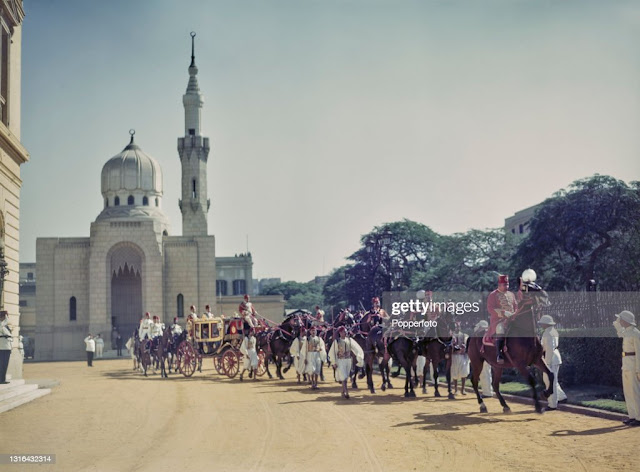 |
| King Farouk's royal procession at the state opening of the Egyptian Parliament in 1945 in Cairo |
However, history remembers that he could have easily squashed the officers' movement with his orders. But he was leaving Alexandria for good, and he told General Naguib that he wished that the officers would succeed in what he had failed to do. Naguib would know in a bitter that it was a cursed mission that would follow and follow his sons.
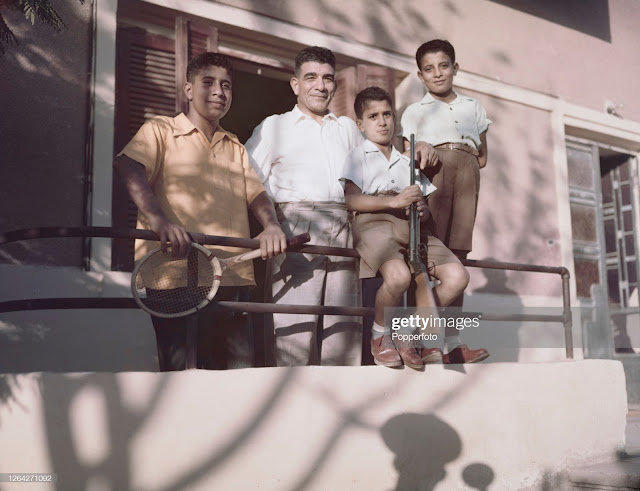 |
| Mohamed Naguib and his sons in their house in Cairo in October 1952 |
The Free Officers Movement had a brief period of success. They overthrew the monarchy and implemented some progressive reforms. However, they soon became or rather Gamal Abdel Nasser launched a repressive dictatorship. It suppressed freedom of speech, jailed political opponents, and nationalized businesses.
They promised to bring democracy and social justice to Egypt, but they ultimately failed to deliver on their promises.
The story of the Free Officers Movement is a cautionary tale about the dangers of military coups. They may seem like a quick fix for a country's problems, but we know how it ended.
Farouk knew that he had failed, and he actually left without a fight. This is a rare event in Egyptian history, as rulers typically do not admit that they are wrong, and they will not leave unless they are dead or killed.
Ironically, Farouk was one of the few Egyptian rulers who broke this cycle. He died in Rome a decade later, but he at least had the courage to step down when he realized that he was no longer fit to rule.
In any case, I feel like I am repeating myself here, but on the occasion of commemorating the Free Officers' coup, which we are still living with its impact, I decided to share with you some photos of Gamal Abdel Nasser and his comrades in colour as I have done above.
 |
| Nasser and his wife Tahia Kadem at their house in Cairo hours before the wedding of their daughter Hoda in 1964 That photo is from Hoda Abdel Nasser's family album |
Recently, historical photography fans in Egypt discovered that Getty Images had shared a cache of Kodachrome photos from Egypt. These photos are beautiful, and they offer a new perspective on Egypt's past. In a surprise, it seems that Hoda Abdel Nasser shared some of the family photos involving Nasser and her mother, the late first lady Tahia Kadem, with Getty Images.
 |
| Nasser and his first granddaughter Hala Sadek who was born in winter 1970 so I assume that photo was taken before his death shortly. |
I used to see Egypt in the old days in black and white, but the Kodachrome photos are on another level. They are so vibrant and colourful, and they really bring history to life.
 |
| The General Nationalist Conference of 1969 in Cairo Nasser left that legacy of endless conferences with bottomless talk |
I am one of those people who could never imagine what Gamal Abdel Nasser would look like in colour photos. He always appeared in my mind in the black-and-white version.
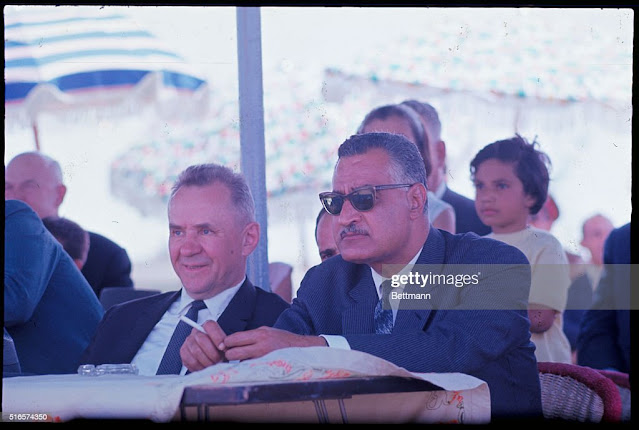 |
| Nasser with the chairman of USSR Premier Alexei Kosygin in Port Said in 1966 |
 |
USSR Premier Nikita Khrushchev with Nasser of the UAR and late President Ben Bella at Karnak Temple in Luxor in May 1964 |
 |
| British prime minister Harold Macmillan and President Gamal Abdel Nasser after the first meeting of its kind after the Suez Crisis in September 1960 in New York |
 |
| Prime Minister of India Jawaharlal Nehru on left with President of Egypt Gamal Abdel Nasser during bilateral talks in Egypt in November 1960. |
 |
| President Eisenhower in his meeting with Nasser, in the presidential suite at the Waldorf-Astoria Hotel on September 26, 1960, on the sideline of the United Nations General Assembly meetings |

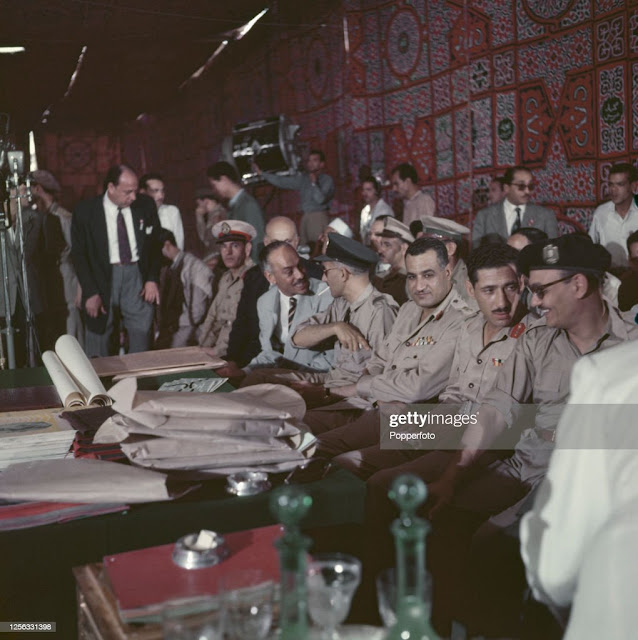

Hello. Thanks very much for your article. My opinion on this is more or less the same as yours. I visited Egypt 25 times so far in the past, and when I read all the books about Egypt between holidays I was very much in favour of the revolution, making Egypt free of the English (and others). Much later I realised that the revolution in effect took away the whole middle class from Egyptian society, leaving a thin layer of rich people, and the 10-or-more children families. How would Egypt look today if for example the US had supported Egypt at that time, or if the king would have stepped back to make room for a talented Egyptian ruler? Time will tell, but instead, at this moment Egypt is left behind with a population that grows with a million souls every six months.
ReplyDeleteDemocracy does not matter, the main goal of the free officers was to achieve independence from the British empire and build up the country, which they did.
ReplyDeleteI am sick of Westerns promoting democracy as the only solution to any problems in the Arab world.
Democracy is a stupid system that lacks any capacity for omg term planning.